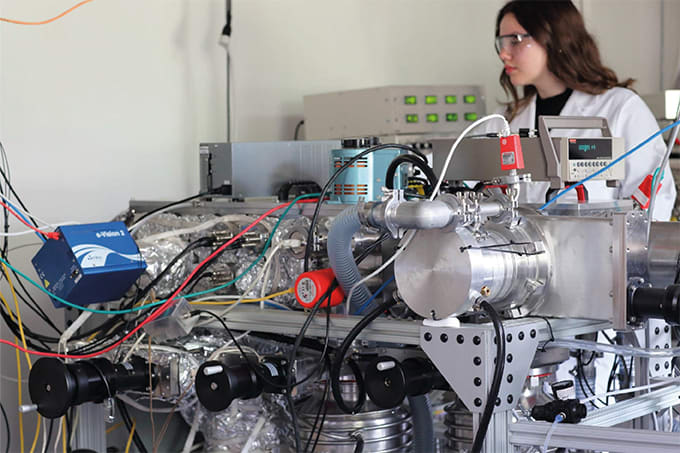Common methods for the analysis of medicinal products include ligand binding assays (LBAs) and chromatographic methods, such as liquid chromatography (LC) or gas chromatography (GC), which are typically used in combination with mass spectrometry (MS). However, over the past decade, another separation technique – capillary electrophoresis (CE) – is being increasingly used to check and confirm the purity, heterogeneity, and glycan association of biologic drugs (1).

One good example is the application of capillary zone electrophoresis (CZE) for the analysis of synthetic human erythropoietin (EPO), which is used for the treatment of anemia associated with certain clinical conditions, including kidney disease and inflammatory bowel disease. EPO treatments must contain a specific mix of protein isoforms to be fully effective, and so accurate and precise quality control assays are required to check EPO isoform heterogeneity.
Why choose CE? Because it is a simple, quick, and effective technique, with exceptional resolving power and a high degree of precision.
We understand precision as the reproducibility of a method’s quantitative and qualitative accuracy relative to data obtained using the same type of instrument and protocol. Industry guidance from the FDA on the validation of analytical methods used for the development and manufacture of biopharmaceuticals specifies that they must be precise, accurate, and of sufficient dynamic range (2). As biologics become increasingly complex, the industry needs – and regulators demand – increasingly precise analytical methods. Precision speaks not only to the analytical validity of a measurement method but, ultimately, to its utility.
In pursuit of CE precision, “home-brew” methods and reagents are progressively being replaced by specialized and standardized reagents and kits optimized for specific CE methods, such as capillary isoelectric focusing (CIEF) and CE-sodium dodecyl sulfate (CE-SDS). The aim is typically to develop a complete workflow solution that is precise but also simple and flexible enough for QC purposes.
Ensuring the precision of commercially available assays is critical for QC during clinical development and commercial manufacture. When addressing robustness, engagement between assay manufacturers and users is key. Critical assay specifications, including precision, of CE analyses can be assessed to meet everyone’s requirements. To that end, cross-company collaborations conducted with (bio)pharmaceutical companies and regulatory authorities have demonstrated the precision of CIEF technology for the analysis of monoclonal antibodies, capillary zone electrophoresis for charge heterogeneity testing of monoclonal antibodies, CE – laser induced fluorescence (CE-LIF) for mapping multi-site N-glycans, and CE-SDS for the analysis of biomolecules (3, 4, 5, 6).
The purity of gene therapy products is also being increasingly monitored using CE and MS technologies. CE-MS data are also used to confirm and corroborate the data obtained using LBAs and other methods. In my view, we will continue to see the rise of CE as an orthogonal tool to address the increasing complexity of QC for new modalities in biologics. After all, precision drives quality.
References
- JS Toraño, R Ramautar, G de Jong, “Advances in Capillary Electrophoresis for the Life Sciences,” J Chromatogr B, 15, 116–136 (2019).
- FDA, “Bioanalytical Method Validation – Guidance for Industry. Biopharmaceutics” (2018). Available at https://bit.ly/3cJVPTl.
- O Salas-Solano et al., “Intercompany Study to Evaluate the Robustness of Capillary Isoelectric Focusing Technology for the Analysis of Monoclonal Antibodies,” Chromatographia, 73, 1137–1144 (2011).
- B Moritz et al., “Evaluation of Capillary Zone Electrophoresis for Charge Heterogeneity Testing of Monoclonal Antibodies,” J Chromatogr B, 1, 101–110 (2015).
- Á Szekrényes et al., “Multi-Site N-glycan Mapping Study 1: Capillary Electrophoresis – Laser Induced Fluorescence,” mAbs, 8, 56–64 (2015).
- B Nunnally et al., “A Series of Collaborations Between Various Pharmaceutical Companies and Regulatory Authorities Concerning the Analysis of Biomolecules Using Capillary Electrophoresis,” Chromatographia, 64, 359–368 (2006).




